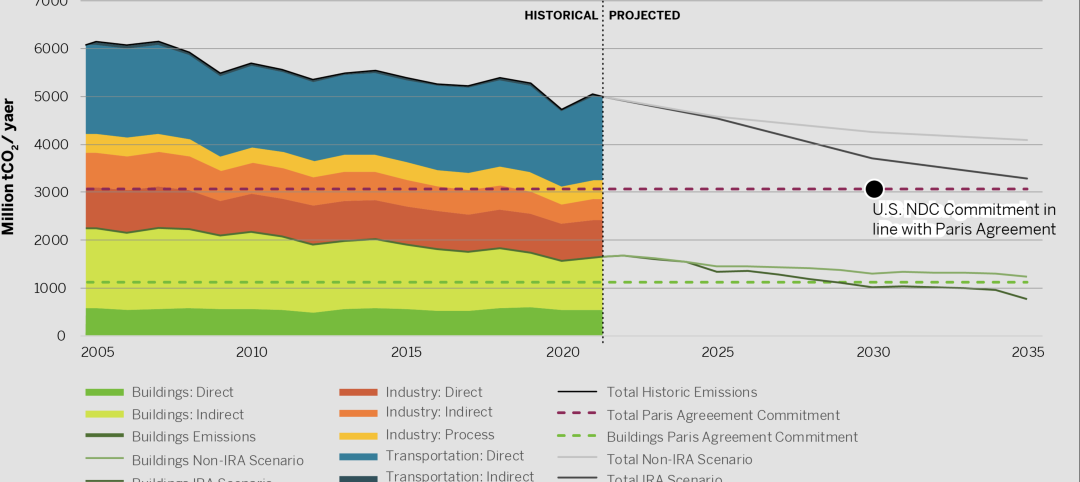The National Council of Architectural Registration Boards (NCARB) Board of Directors has announced their endorsement of the concept of an additional, structured path that leads to licensure in a U.S. jurisdiction.
The new path—licensure upon graduation from an accredited program—would integrate the rigorous internship and examination requirements that aspiring architects must fulfill into the years spent completing a professional degree in architecture.
The concept was designed by a distinguished group of volunteers convened by NCARB, which recommends national architect registration standards, called the Licensure Task Force.
This group, which was initially formed in mid-2013, is headed by NCARB’s Immediate Past President Ron Blitch of Louisiana, and it includes former and current leaders of NCARB, by the National Architectural Accrediting Board (NAAB), the American Institute of Architects (AIA), the Association of Colleges and Schools of Architecture (ACSA), and the American Institute of Architecture Students (AIAS), as well as interns, recently licensed architects, program deans and instructors, and jurisdictional licensing board representatives.
A Progressive Path
Describing the work of the Licensure Task Force, NCARB CEO Michael Armstrong said, “NCARB is engaged in streamlining and simplifying the licensing process for aspiring architects, and we are actively re-engineering all elements of the architectural licensing process—education, experience and examination—to focus on facilitation of licensing.”
“This additional path to licensure is another concrete step to reimagining and reconfiguring each part of the process while upholding the rigorous standards needed to protect the public’s health, safety and welfare,” he said.
This progressive concept was borne of research and development efforts by the Licensure Task Force, with leaders from diverse segments of the architectural community to analyze each component of the licensure process to identify overlaps and redundancies to existing programs.
Now beginning the second year, the Licensure Task Force will start to identify schools interested in participating in the program. NCARB expects to issue schools Requests for Information later in the year, followed by a Request for Proposal process in 2015.
Exam Evolution
In addition to the licensure work, NCARB also announced this month that a transition plan is underway to guide the implementation of major improvements and changes to the Architect Registration Examination® (ARE®), the test that all prospective architects must take to get their licenses. The new ARE 5.0 will launch in late 2016, while ARE 4.0 will remain available for at least 18 months after the launch.
The exam is required by all U.S. states, the District of Columbia, Guam, Puerto Rico, and the U.S. Virgin Islands for initial architectural licensure by assessing candidates for their knowledge, skills, and ability to provide all services required in the practice of architecture.
About NCARB
The National Council of Architectural Registration Boards’ membership is made up of the architectural registration boards of all 50 states as well as those of the District of Columbia, Puerto Rico, Guam, and the U.S. Virgin Islands. NCARB assists its member registration boards in carrying out their duties and provides a certification program for individual architects.
NCARB protects the public health, safety, and welfare by leading the regulation of the practice of architecture through the development and application of standards for licensure and credentialing of architects. In order to achieve these goals, the Council develops and recommends standards to be required of an applicant for architectural registration; develops and recommends standards regulating the practice of architecture; provides to Member Boards a process for certifying the qualifications of an architect for registration; and represents the interests of Member Boards before public and private agencies. NCARB has established reciprocal registration for architects in the United States and Canada.
Related Stories
Giants 400 | Dec 12, 2023
Top 35 Veterans Affairs Facility Architecture Firms for 2023
LEO A DALY, Page Southerland Page, Guidon, and HDR top BD+C's ranking of the nation's largest Veterans Affairs facility architecture and architecture/engineering (AE) firms for 2023, as reported in Building Design+Construction's 2023 Giants 400 Report.
Giants 400 | Dec 12, 2023
Top 40 Military Facility Architecture Firms for 2023
Michael Baker International, HDR, Whitman, Requardt & Associates, and Stantec top BD+C's ranking of the nation's largest military facility architecture and architecture/engineering (AE) firms for 2023, as reported in Building Design+Construction's 2023 Giants 400 Report.
Office Buildings | Dec 12, 2023
Transforming workplaces for employee mental health
Lauren Elliott, Director of Interior Design, Design Collaborative, shares practical tips and strategies for workplace renovation that prioritizes employee mental health.
Giants 400 | Dec 11, 2023
Top 150 Local Government Building Architecture Firms for 2023
Gensler, HOK, Stantec, and Skidmore, Owings & Merrill top BD+C's ranking of the nation's largest local government building architecture and architecture/engineering (AE) firms for 2023, as reported in Building Design+Construction's 2023 Giants 400 Report.
Giants 400 | Dec 11, 2023
Top 90 State Government Building Architecture Firms for 2023
Page Southerland Page, Skidmore, Owings & Merrill, Stantec, and NORR top BD+C's ranking of the nation's largest state government building architecture and architecture/engineering (AE) firms for 2023, as reported in Building Design+Construction's 2023 Giants 400 Report.
Codes and Standards | Dec 11, 2023
Washington state tries new approach to phase out fossil fuels in new construction
After pausing a heat pump mandate earlier this year after a federal court overturned Berkeley, Calif.’s ban on gas appliances in new buildings, Washington state enacted a new code provision that seems poised to achieve the same goal.
Green | Dec 11, 2023
U.S. has tools to meet commercial building sector decarbonization goals early
The U.S. has the tools to reduce commercial building-related emissions to reach target goals in 2029, earlier than what it committed to when it signed the Paris Agreement, according to a report by the U.S. Green Building Council.
MFPRO+ News | Dec 11, 2023
U.S. poorly prepared to house growing number of older adults
The U.S. is ill-prepared to provide adequate housing for the growing ranks of older people, according to a report from Harvard University’s Joint Center for Housing Studies. Over the next decade, the U.S. population older than 75 will increase by 45%, growing from 17 million to nearly 25 million, with many expected to struggle financially.
Office Buildings | Dec 11, 2023
Believe it or not, there could be a shortage of office space in the years ahead
With work-from-home firmly established, many real estate analysts predict a dramatic reduction in office space leasing and plummeting property values. But the high-end of the office segment might actually be headed for a shortage, according to real estate intelligence company CoStar Group.
University Buildings | Dec 8, 2023
Yale University breaks ground on nation's largest Living Building student housing complex
A groundbreaking on Oct. 11 kicked off a project aiming to construct the largest Living Building Challenge-certified residence on a university campus. The Living Village, a 45,000 sf home for Yale University Divinity School graduate students, “will make an ecological statement about the need to build in harmony with the natural world while training students to become ‘apostles of the environment’,” according to Bruner/Cott, which is leading the design team that includes Höweler + Yoon Architecture and Andropogon Associates.

















